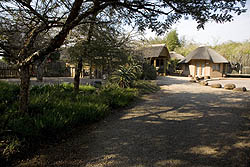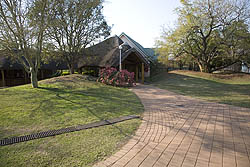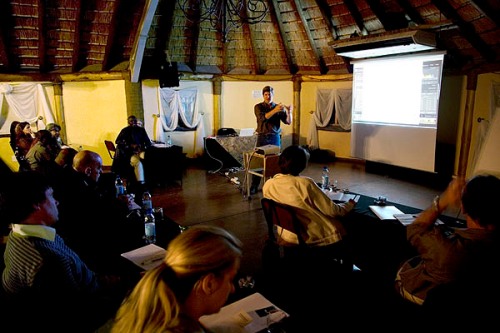Dusk in Cape Town with Table Mountain and Lion’s head to the right of it. Africa Media Online’s Digital Campus moves to the “Mother City” next week after a wonderful week in Pietermaritzburg.
Welcome to the seventh edition of the Digital Picture Library Manager blog designed to add value to the management of your picture and media collections as well as to keep you up to date with developments at Africa Media Online and the world of digital imaging that could be of benefit you.
_________________________________________________________________________________
URGENT MATTERS:
A. Bookings for the digital masterclasses with Graeme Cookson and Peter Krogh in Cape Town will close this Friday August 8. For Johannesburg the bookings will close the following Friday August 15. Further information and booking forms can be found at this link: Digital Campus
B. If you want to take advantage of the final intake for 70% funding for digitisation under the African Image Pipeline project, you need to have signed the necessary paperwork by Friday August 29.For further information please visit this link: Grant Funding for Digitisation of Image Collections
_________________________________________________________________________________
In this edition:
1. Peter Krogh wow’s masterclass participants with geostamping images
2. Graeme Cookson’s two day class sells out countrywide
3. African Photo Entrepreneur Programme gathers photographers from around the country and continent
4. Building an Archive that will last: Resolution and how it works
1. Peter Krogh wow’s masterclass participants with geostamping images
Peter Krogh demonstrating the ideal workflow using the best of various software programmes to ensure the most efficient and secure way of handling thousands of images to build and archive which you won’t lose and you can get the most from
Peter Krogh wowed participants at the Digital Photography Ecosystem masterclass with a demonstration of how photographers can geostamp their images and at the click of a button in the image metadata to link through to the location where the image was shot on Google Maps. US based digital imaging expert, Krogh was delivering his first session at Africa Media Online’s 2008 Digital Campus in Pietermaritzburg.
Geostamping wasn’t the only wow factor in the session as Krogh demonstrated an overview of an ideal Raw workflow which uses the best of Microsoft’s Expression Media 2, Adobe Bridge and a new programme called Image Ingestor Pro 3. As an Alpha tester for Adobe, Krogh also demonstrated some of the new functionality in Lightroom 2, launched last week internationally by Adobe.
Krogh’s primary emphasis is on managing thousands of images in the most efficient way possible using the best of the various software programmes available, and ensuring that photographers do not lose the files they have put so much work into. Referring to the efficiency of one’s digital workflow Krogh said, “Time is not just money, it is economic survival these days. If the guy down the road is turning work around faster than you, you are going to lose out.” He brings to photographers a highly ordered process which ensures files move through to being archived on one hand and available to markets on the other ensuring photographers are leveraging the most economic return out of their pictures.
Peter Krogh will be teaching digital workflow in Cape Town next week (August 11-15) starting with an evening class on Monday 11 and followed by two in-depth two-day classes where participants are at computers working through the ideal workflow. The masterclasses then move to Johannesburg during the week of August 18-22. To find out more information or download a booking form please go to Digital Campus or call David Larsen on 082-829-7959 or Aneesa on 033-345-9445.
2. Graeme Cookson’s two-day masterclass sells out countrywide
Several weeks before the start of the Digital Campus in Pietermaritzburg, Graeme Cookson’s two-day digital masterclasses, known as “Practical Digital Workflow,” were sold out countrywide.
“It is a testament to the quality of Graeme’s teaching that every year people who have done Graeme’s one day course rush to fill his two day course the following year,” said Africa Media Online’s Director, David Larsen. “Graeme has an amazing ability to make complex matters of digital imaging crystal clear. He is able to impart a highly productive way of bringing the best out of images.”

Graeme Cookson demonstrating the concept of resolution to participants in the Digital Imaging Essentials masterclass in Pietermaritzburg yesterday.
Coming from a prepress and photography background, Graeme brings to imaging professionals and organisations a productive digital darkroom. “When people really understand what is under the hood of digital images,” said Cookson, “then they can become highly productive rather than wasting lots of time going tweek, tweek, tweek.”
The kind of information Graeme imparts quickly makes a significant difference to the productivity of a production team, whether in a design studio, museum or media organisation. “That quickly translates into lots of money saved,” said Larsen. “It really is a no brainer as far as the investment is concerned, even for a cash strapped photographer. Between them Graeme and Peter are going to make you many times over what you spend on the opportunity to learn from them. This is really the point as far as Africa Media Online is concerned as we are all about enabling Africans to compete on the global stage.




The Ascot Conference Centre, where the Pietermaritzburg Digital Campus is being hosted, has proved to be a wonderfully relaxed environment in which to learn.
3. African Photo Entrepreneur Programme gathers photographers from around the country and continent

Participants in the African Photo Entrepreneur Programme socialise with Africa Media Online staff at the launch of the programme in Pietermaritzburg on Sunday.
Photographers gathered from all over South Africa and the African continent on Sunday at the launch of the Pietermaritzburg leg of the African Photo Entrepreneur Programme. Photographers traveled to Pietermaritzburg from Johannesburg, Cape Town, Durban, Harare and Nairobi to take advantage of the opportunity afforded by the unique programme.
The African Photo Entrepreneur Programme has been established to provide a catalyst for the development of photo entrepreneurs in Africa – photographers who have the technical skills and market savvy to compete on a global stage.
“Although the 2008 programme was aimed at photographers in southern Africa, we had applications from all over the continent,” said Africa Media Online’s director, David Larsen. “It really has shown us that we are hitting the nail on the head as far as the need out there among African photographers goes.”
“Although we have enjoyed some funding from the European Union as part of our African Image Pipeline, project we were seriously short of funds in running this programme, so were limited in the amount of support we could provide for transport and living costs. It has been amazing to me, however, that almost all of these photographers have made their own way here, some coming as far afield as East Africa and West Africa.”
“We can really see the entrepreneurial spirit in the extent to which many of these photographers are risking their own resources to reach out and take this opportunity. And it is not just those from other parts of Africa. Participants have traveled from Joburg and Cape Town and we have two participants from Durban who make their way by catching lifts and hitch-hiking every morning long before dawn to make it here in time.”
Sixteen APEP participants are spending this week learning technical digital workflow skills from Graeme Cookson and Peter Krogh as part of Africa Media Online’s 2008 Digital Campus. Next week (August 11-15) 12 APEP participants will do the same in Cape Town and the week after (August 18-22) a further 12 will undertake the training in Johannesburg. At the end of each week the participants will be given a project to complete over the next month, and upon successful completion of that, they will be invited back to Pietermaritzburg in November for the Global Competitiveness Masterclass. There they will be given the inside track on market access by experts from around the world who are on the cutting edge of the global picture industry.
Click here to see who made it to APEP Pietermaritzburg.
3. Building an Archive that will last: Resolution and how it works
![]()
Zooming in to an image one sees that it is composed of thousands of colour squares. These are pixels, seen here in the close up of a human eye.
We have been working through the submission standards that africanpictures.net sets for images being submitted to its picture library. We have done file size, interpolation and bit depth and now we come to resolution. For images submitted to africanpictures.net the resolution must be set to 300 dpi. It might sound strange to hear me say this, but africanpictures.net asks for this more for the sake of the clients receiving the images, than for the sake of image quality. It is the file size that determines image quality, not the resolution setting. Let’s explain.
If you look at a picture in a magazine with a magnifying glass you will see it is composed of thousands of tiny dots each of a single colour, often different from the one next door to it. Digital images are similar in their make-up, only the tiny dots are square and are called pixels (picture elements). Each pixel is a digital facsimile of a particular tiny point on a picture. There is actually nothing in a pixel except a set of digits that tells it what colour it should be. While pixels vary greatly in colour from one pixel to another, each pixel in itself is a solid single colour.
Resolution is the measure of the number of pixels used to represent an image. So if an image is 500 pixels long and 400 high the total number of pixels is 200,000 (500 x 400). Resolution is usually measured in dpi which stands for dots per inch. Although everyone tends to speak about dpi, when it comes to digital imaging it is actually more correct to speak about ppi or pixels per inch. Common usage, however, has become dpi so let’s stick to that. Either way, what we are measuring when we speak about dpi or ppi, is the density of pixels, or how many pixels are found in every inch of a picture.
Because the only information that pixels have in them is a set of digits that determines its colour, a pixel will expand to fill any space you give it. So if you have an image with 200,000 pixels in it, it is quite possible for you to set it at 300 pixels per inch and every inch will have 300 pixels along one side. It is also quite possible to set that same image to 1 dot per inch and the pixels will expand until each one is one square inch in size. The amount of information, however, has not changed at all. The file size will remain constant, it is just that you have spread that information over a larger area. It is like taking a can of paint and painting many coats over a smaller area, or taking the whole can and spreading it over a larger area. The volume of paint does not change at all but the area covered does. In the same way the file size of the image does not change but the resolution does.
The standard for printing images in a book or magazine has become 300 dpi even though many printers only print at 150 dpi. There are good reasons for this, which we won’t discuss here. As a result people tend to speak of a 300 dpi image. But it is no good saying, “a 300 dpi image is a quality image,” without giving the dimensions of the image. That is like saying the distance between Johannesburg and Pretoria is 100 km/hour. You still want to know, “how many hours?”
To say an image is 300 dpi only tells you the density (how many coats of paint), not how many pixels you have (how much paint you have). To take the paint analogy further, if you are needing to paint a large wall with three coats to ensure quality and discover you have run out of paint after one coat, the wall will not look great. In the same way if you try and spread an image that has enough pixels to cover an A5 page at 300 dpi over an A3 page, your quality will not be great.
The 300 dpi standard, then is simply a convention to make designers feel they are in familiar territory. So yes, set your images at 300 dpi, but the real question is “300 dpi over what area? An image that is 2 cm wide and 1 cm high at 300 dpi is not going to be of sufficient quality to print well if you stretch it over an A4 page (close to 20 cm x 30 cm).

